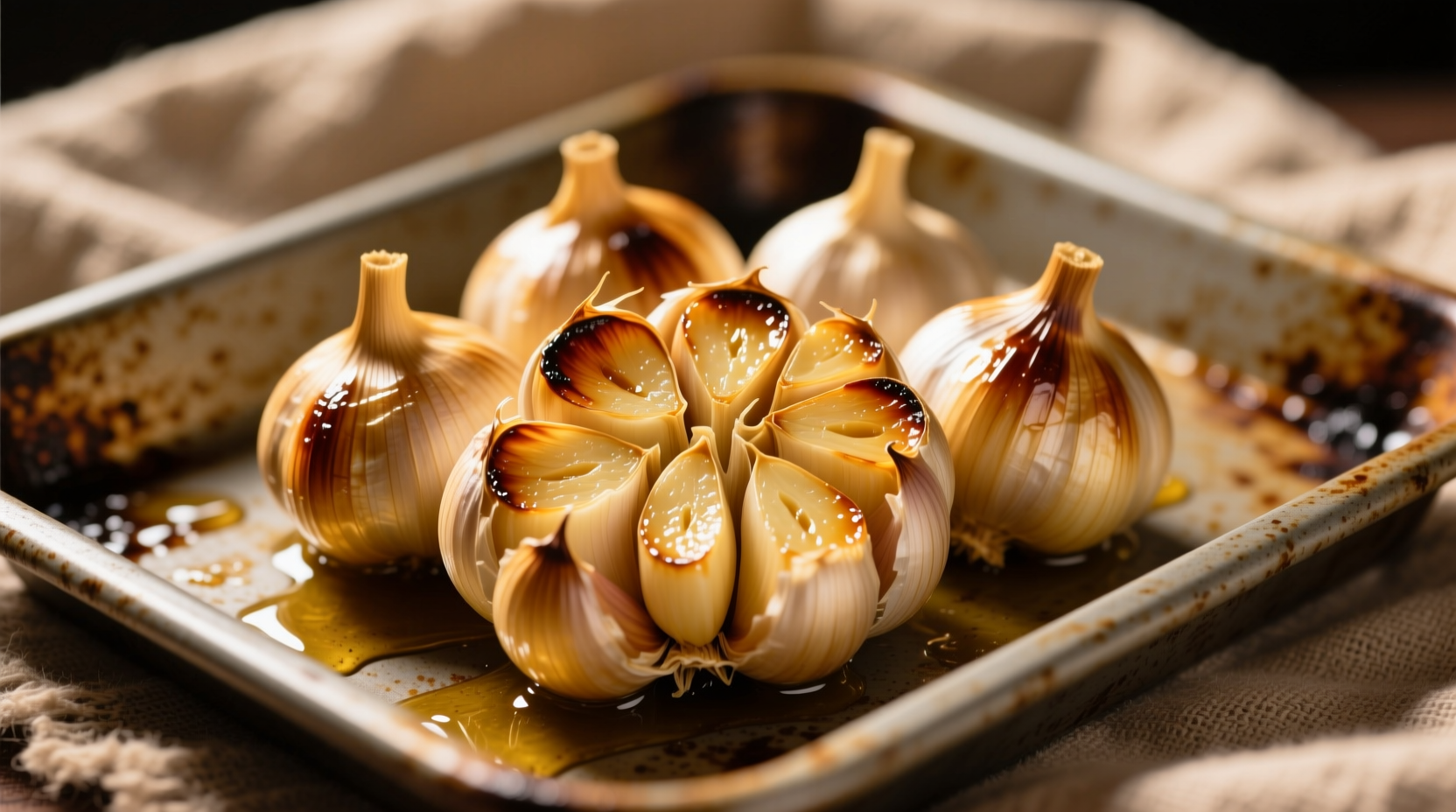There's magic in transforming sharp, pungent garlic cloves into sweet, buttery delights with nothing but an oven and patience. Oven-roasted garlic isn't just a cooking technique—it's your secret weapon for elevating everyday meals. Forget complicated methods or special equipment; this foolproof approach delivers consistent results whether you're preparing a simple weeknight dinner or entertaining guests.
Why Oven Roasting Beats Other Methods
While you might see microwave or stovetop garlic roasting methods, oven roasting provides unmatched control and flavor development. The gentle, even heat allows complex flavor compounds to form gradually without burning. According to culinary research from the USDA Food Research Laboratory, roasting between 375-400°F optimizes the Maillard reaction while preserving beneficial allicin compounds that raw garlic loses when crushed.
| Roasting Method | Temperature Range | Time Required | Flavor Development | Consistency |
|---|---|---|---|---|
| Oven Roasting | 375-400°F (190-204°C) | 40-55 minutes | Complex, sweet, mellow | Perfectly uniform |
| Stovetop | Variable heat | 15-25 minutes | Less developed, potential bitterness | Inconsistent |
| Slow Cooker | Low setting | 2-3 hours | Muted flavors | Overly soft |
What You'll Need for Perfect Results
Gather these simple items before starting your garlic roasting journey:
- Fresh garlic bulbs (look for firm, plump cloves with tight skin)
- High-quality olive oil (extra virgin preferred)
- Small baking dish or aluminum foil
- Sharp knife
- Optional: Herbs like rosemary or thyme
Step-by-Step Roasting Process
Follow these professional chef-tested steps for flawless roasted garlic every time:
- Prep the garlic: Separate cloves from the bulb but keep skins intact. Peel away only the loose outer layers.
- Arrange properly: Place cloves in a single layer in your baking dish. For whole bulb roasting, slice ¼ inch off the top to expose cloves.
- Oil application: Drizzle generously with olive oil, ensuring each clove gets coated. Toss gently to distribute oil evenly.
- Seasoning: Add salt and optional herbs. Avoid pepper at this stage—it can burn during roasting.
- Oven setup: Preheat to 400°F (204°C). Position rack in the center of the oven.
- Roasting time: Bake 40-50 minutes for separated cloves, 50-60 minutes for whole bulbs. Rotate pan halfway through.
- Doneness check: Cloves should be deeply golden and easily pierced with a fork.
Visual Indicators of Perfectly Roasted Garlic
Don't rely solely on timing—use these visual cues to determine doneness:
- Color transformation: Cloves progress from white to pale gold to deep caramel
- Texture test: Gently squeeze a clove—it should yield like soft butter
- Aroma development: Sharp garlic smell transforms into sweet, nutty fragrance
- Shrinkage: Cloves reduce in size by about 30% as moisture evaporates
According to food science research from Oregon State University Extension, the ideal internal temperature for roasted garlic is 185-195°F (85-90°C). At this range, the starches fully convert to sugars while preserving beneficial compounds.
Storage and Usage Tips
Maximize your roasted garlic investment with these professional techniques:
- Immediate use: Squeeze warm cloves from skins for spreads or mashing into dishes
- Short-term storage: Keep in airtight container with olive oil in refrigerator for up to 10 days
- Long-term preservation: Freeze whole cloves in oil for up to 6 months
- Flavor infusion: Add roasted garlic to olive oil for gourmet finishing oil
Professional chefs recommend always roasting extra garlic—it's the foundation for countless flavor enhancements. Try these creative applications:
- Blend into mashed potatoes for restaurant-quality richness
- Mix with softened butter for compound butter
- Add to salad dressings for depth without sharpness
- Stir into tomato sauces for complex umami notes
- Spread on crusty bread as an elegant appetizer
Avoid These Common Roasting Mistakes
Even simple techniques can go wrong. Steer clear of these frequent errors when you roast garlic cloves in the oven:
- Peeling before roasting: Skins protect cloves from drying out and burning
- Insufficient oil: Garlic needs generous coating to prevent sticking and promote even cooking
- Overcrowding: Cloves need space for proper air circulation
- High heat: Temperatures above 425°F cause bitterness through excessive browning
- Skipping rotation: Ovens have hot spots—rotate pan halfway through cooking
Temperature and Timing Variations
While 400°F for 45 minutes works perfectly for most home ovens, adjust based on your specific situation:
- Convection ovens: Reduce temperature by 25°F and check 5-10 minutes early
- High altitude: Increase time by 10-15% due to lower boiling point
- Large cloves: Add 5-8 minutes to cooking time
- Small cloves: Reduce time by 5-10 minutes
Remember that oven temperatures can vary significantly. Using an oven thermometer (National Institute of Standards and Technology recommends calibrating ovens annually) ensures accuracy for perfect roasted garlic every time.

Why This Method Works Every Time
The science behind perfect oven-roasted garlic lies in controlled caramelization. As garlic heats slowly, the enzyme alliinase (which creates sharp flavors) deactivates around 140°F, while natural fructose sugars caramelize between 320-356°F. This dual process transforms harsh compounds into sweet, complex flavors. The enclosed environment of your baking dish traps moisture initially, then allows gradual evaporation for ideal texture.
Unlike quick high-heat methods that create uneven results, the oven's radiant heat penetrates cloves uniformly. This explains why professional kitchens rely on oven roasting for garlic preparation—it delivers consistent quality with minimal supervision, freeing you to focus on other meal components.











 浙公网安备
33010002000092号
浙公网安备
33010002000092号 浙B2-20120091-4
浙B2-20120091-4